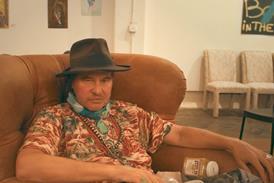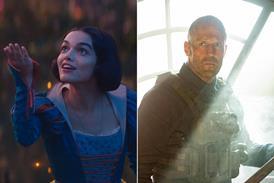Fascinating excavation of the true value of dinosaur bones to finders, collectors, museums and scientists

Dir: Jeremy Xido. Canada/Germany. 2024. 98mins
How do you put a price on the skeleton of a dinosaur that lived some 100 million years ago? For the amateur fossil hunters in impoverished communities like the Atlas mountains of Morocco or the Gobi desert in Mongolia, a bone or two can support a family. For the high-end auction houses and the moneyed collectors, it could be worth tens of millions. For the palaeontologists – and by extension, the rest of humanity – the scientific knowledge locked into these bones could be priceless. This fascinating, far-reaching documentary looks at the increasingly heated competition for the bones of the giants that once roamed the earth.
As engagingly entertaining as it is informative
Shot in arresting widescreen and blessed with a wealth of intriguing characters, this is a handsome, thought-provoking picture from filmmaker and performance artist Jeremy Xido, whose previous work includes numerous shorts and the feature documentary Death Metal Angola. The Bones takes in some of the hot-button topics of the moment: the threat of extinction due to mankind’s mismanagement of the environment; post-colonial payback; and the feverish excesses of capitalism and the ultra-wealthy. But the film handles the themes lightly; predominantly character-driven rather than issue-driven, it is as engagingly entertaining as it is informative. Perennial audience interest in dinosaurs as a subject should be a key selling point for this pacey, globe-trotting documentary.
The film starts and ends in the Gobi desert – fitting, as it was the story of the repatriation to Mongolia of the Tarbosaurus Bataar, a dinosaur that had been illegally taken from the country and was due to be sold in an American auction house, that first piqued Xido’s interest in the world of fossils.
A central figure in Mongolian palaeontology is Bolorsetseg Minjin, a second-generation dino-expert (her father, uncle and brother are all palaeontologists) who was instrumental in raising the alarm about the sale of the Tarbosaurus Bataar and who speaks passionately about the colonial hoarding of scientific knowledge (the picture could make an interesting companion piece to Mati Diop’s Berlin winner Dahomey). Passionate about engaging the next generation of dinosaur fans, Minjin has a mobile museum which tours Mongolia.
Other scientists include the charismatic Nizar Ibrahim, who scrambles into treacherously unstable tunnels in the Moroccan desert to secure prehistoric fish skeletons (“the Mona Lisa of Sclerorhynchus”, he says dreamily), and tattooed and pierced American Jingmai O’Connor, who embarks on a charm offensive to coax landowners to offer up their finds to science rather than the dealers. She argues that there should be a panel of experts to assess each significant find for its scientific value before it is offered onto the open market.
On the other side of the great dinosaur divide, there are people like larger-than-life Frenchman Francois Escuillie, whose vast warehouse full of dinosaur relics speaks of his passion – the fact that some of the skeletons have been converted into lamp stands suggests a lack of reverence that doesn’t endear him to the scientists, or the high-end dealers. Escuillie has had multiple brushes with the law; his methods of securing his specimens are not always, we glean from a loaded conversation with a friend, entirely above board. Escuillie swaggers around a dinosaur relic conference – a kind of prehistoric trade show – in Tucson, Arizona. He needs to be there, he confides to the camera, otherwise people will assume that he’s either dead or in prison.
Meanwhile, at the top end of the market, a meticulously restored Triceratops is displayed in a Parisian auction house which fields telephone bids from the kind of people who have €6.6 million to spend on an 8 metre-long dinosaur.
But while the collision of vested interests and colourful characters makes for engrossing viewing, some of the picture’s most powerful moments come when the film steps back and takes stock of the geological drama of the fossil hunting landscapes (drone shots are put to particularly effective use). As Ibrahim says, astronomy shows us how small we are in space, and palaeontology how small we are in time. It’s a humbling thought.
Production company: Intuitive Pictures
International sales: Dogwoof sales@dogwoof.com
Producer: Ina Fichman
Screenplay: Jeremy Xido, Nick Taylor, Eamonn O’Connor
Cinematography: Kaveh Nabatian, Bettina Borgfeld, Johan Legraie, Claire Sanford, Étienne Roussy, Léna Mill Reuillard, Sarah Blum
Editing: Nick Taylor, Tom Randaxhe, Jacob Thusen, Boban Chaldovich
Music: Ramachandra Borcar
























